After the destruction of The Tower the hero, if he perseveres, will always find The Star, the bright spot in the nighttime that gives him hope, inspiration and the courage to travel the realms of The Moon and learn her secrets. Then and only then can he understand the true nature of reality. It becomes plain as day.
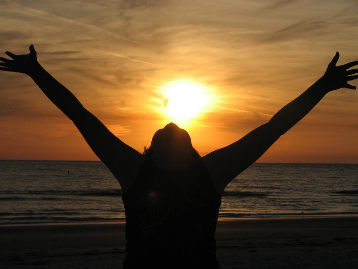
The Sun reveals all. Unlike The Moon key, he shows not just a profile, but his full face. He still casts shadows, but unlike moon shadows that conceal, frighten, and mystify, sun shadows add dimension and interest. Sunlight shows everything in its true form. All mysteries are revealed in its warm, nourishing light.
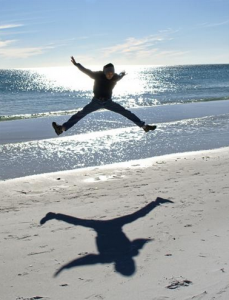
The Sun is everything to us. We are truly solar powered beings. His dazzling rays power the earth, bringing us food, warmth, weather, and life itself. His overwhelming presence attracts us and keeps us on our cyclic path.
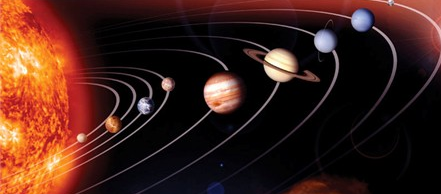
Sunlight also nourishes our spirits. As the days grow longer and warmer our souls blossom with joy and renewed vigor. Without The Sun Mother Earth would be a barren rock tumbling through a black void.
In the Rider-Waite-Smith deck The Sun shines on a small child riding with easy balance on the back of a white horse. According to the Brihadaranyaka Upanishad (I, 1), a white horse is a symbol of the cosmos. He/she carries the red banner of vital life force. This is Carl Jung’s Eternal Child, the part of us that existed before we forgot our spiritual natures, bought into the myth of the physical world, and were indoctrinated into the mores of human society; the part of us that plays joyfully throughout the infinity of the cosmos. Or, as the Zen koan says, our original face. The face that existed before our mothers and fathers were born.
Most other decks depict the sun shining on two children, usually a boy and a girl, holding hands or embracing. This is another way of depicting the Eternal Child. It reminds us that to acquire the perfect harmony and joy of this archetype we must balance and reconcile our yin and yang, masculine and feminine, animus and anima, body and soul, conscious and unconscious.*
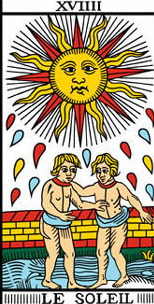
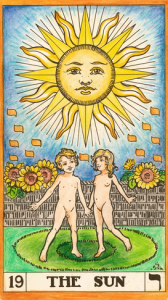
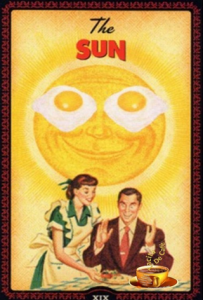
We have seen this triad of a central figure and two opposing figures over and over again in the major arcana.
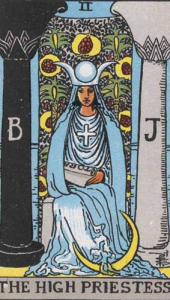
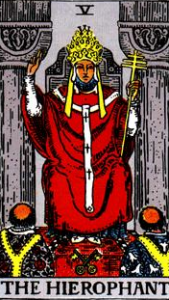
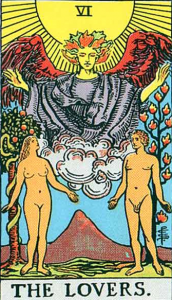
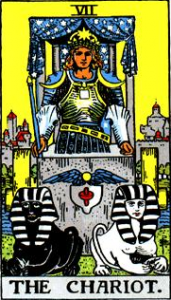
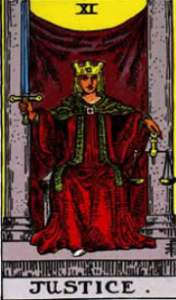
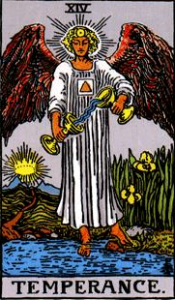
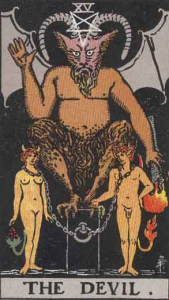
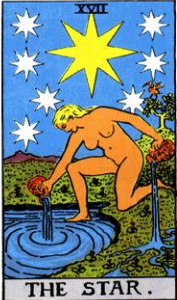
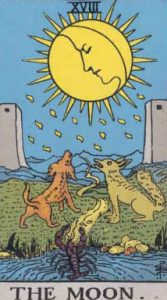
But notice that the two opposites are always pictured as separate. In The Sun key the two children embrace or hold hands, the opposing/opposite forces are at last united into a functional, integrated whole*
This new and complete entity is fragile. The key implies this by showing a protective wall between the two entwined children and the four sunflowers representing the four elements of fire, water, earth and air or the four kingdoms of animal, vegetable, mineral, and human. The wall creates a temnos or sacred space that protects and defines this ephemeral being.
The Sun is all about spiritual and physical power and well being which can only be brought about by the integration and the resolution of opposites.
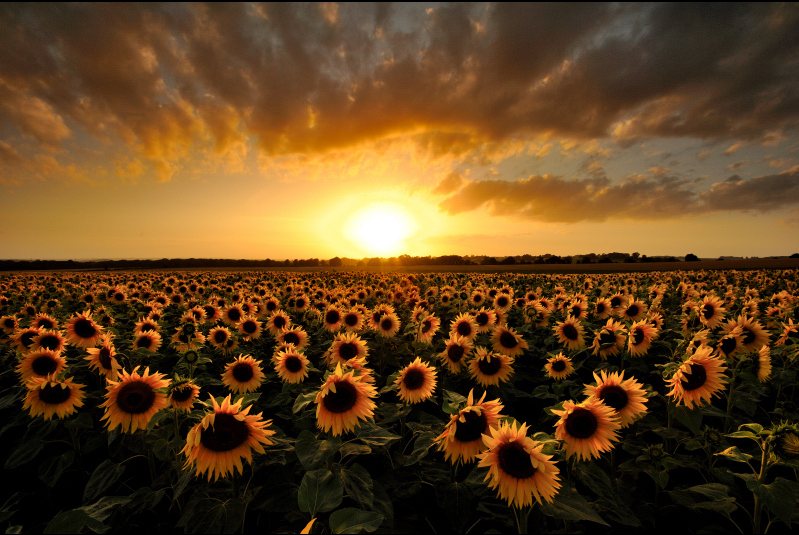
*Jung and Tarot, An Archetypal Journey, Sallie Nichols


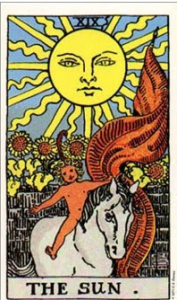
4 thoughts on “The Sun, Part I: The Major Arcana and The Hero’s Journey”
Mind blown! I love love love this.
Fabulous compilation of images. If I was still teaching I would direct my freshmen to your Tarot pages for a deeper understanding of archetypal images and how they transfer from one culture to another.
I always learn something from your notes, but this time I especially enjoyed the Housewive’s Tarot deck and “Here Comes the Sun” video.
I’m ever-grateful that we took that trip through the midwest together! You’re a sunbeam, m’dear.
Thank you! I have enjoyed this a lot! The pillars of mercy and severity remind me of the Sephirot Gevurah and Chesed that sit on either side of Beauty (Tifereth) in Kabbalah. It is all so fascinating!
Hi Silver! Good to hear from you.
Yes, exactly. All the pillars in the major arcana correspond to the outside columns of Sephirot on the Tree of Life. Gevurah and Chesed are the middle Sephirot on each column. Tifereth is the central Sephirah of the middle pillar.